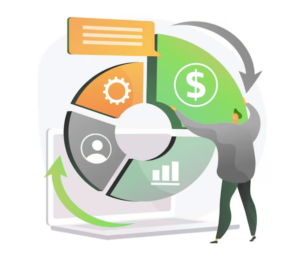What if the way we think about Buyer’s Journey is upside down?
Smart marketing and sales teams collaborate to map out the buyer’s journey, thinking about how they can provide the right information to buyers at the right time during their decision making process. While this sounds helpful, I see a few problems:
First, the Buyer’s Journey is anything but linear. In most cases, it looks more like a cloud of dust than a straight line. Trying to determine where a buyer is in this process feels futile, yet sales and marketing teams try to plot this out. It’s no wonder that most Buyer’s Journey maps get created and then rarely used.
Second, and perhaps most importantly, buyers buy based on emotion more than fact. Harvard professor emeritus and author of How Customer’s Think, Gerald Zaltman, shares research that validates what I’ve learned in every sales training over the past three decades of my career: “Emotion is what really drives the purchasing behaviors, and also, decision making in general.” He found that 95% of purchasing decisions are subconscious [Source].
In his book, The Perfect Plan, Don Barden cites data that buyers only remember a tiny fraction of the knowledge you share with them. They all remember how you make them feel. In essence, the buying process should be designed less to make the buyer an expert in your area of speciality, and more to make them feel comfortable that you can help them achieve results.
On the other side of the buying process, we have this thing called Customer Experience. Once a new customer signs the order, the CX team kicks into action. Smart companies look at the experience across the customer lifecycle, strategically building emotions that sustain loyalty.
An entire genre of work around CX exists in the operations and customer success world by authors like Joseph Pine, James Gilmore, and Joey Coleman to name a few. Most of this research has yet to make its way into net-new sales and marketing.
Buyers buy based on emotion. They use facts to feel confident (emotion) and reduce fear (emotion) about their decision.
Based on this line of thinking, here are a few questions:
- Since buyers buy off emotion, what if we took the lessons of Customer Experience and applied them to the Buyer’s Journey?
- What if the buyer’s journey was as focused on how we made the members of the buying team feel rather than just trying to arm them with knowledge?
- How could this transform marketing and sales?
- How could marketing and sales cooperate to create a memorable and meaningful Buyer’s Experience?
- What if we replaced the term Buyer’s Journey with Buyer’s Experience?
Originally published on Darrell Amy’s LinkedIn.




